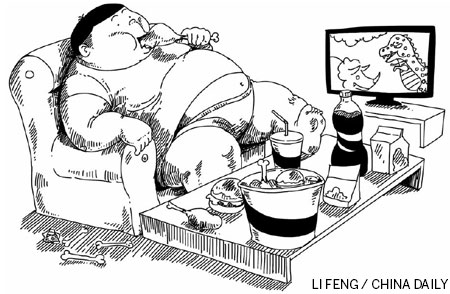Child's obesity is outpacing growth

Obesity in China, particularly among children, has become a growing health concern that will not only seriously affect the health of future generations but also place a heavy economic burden on the country. In 1982, only 7 percent of the population was obese, now, according to the World Health Organization, more than 38 percent of Chinese above the age of 15 are overweight.
To make the situation even more serious, China - as well as Vietnam, India, and many other developing countries - has to shoulder a "double burden": the persistence of undernutrition, particularly among children in rural areas, and a rapid rise in obesity and overweight-related diseases such as cardiovascular disease, hypertension and strokes, type II diabetes and certain forms of cancer.
Although the terms obese and overweight are sometimes used interchangeably, they have different meanings. The body mass index is used to determine body fat based on a person's weight and height. A healthy BMI is considered to be between 18.5 to 25. A person with a BMI between 25 and 30 is considered overweight, while a person whose BMI is more than 30 is considered obese. Morbid obesity refers to someone with a BMI of 40 or more.















